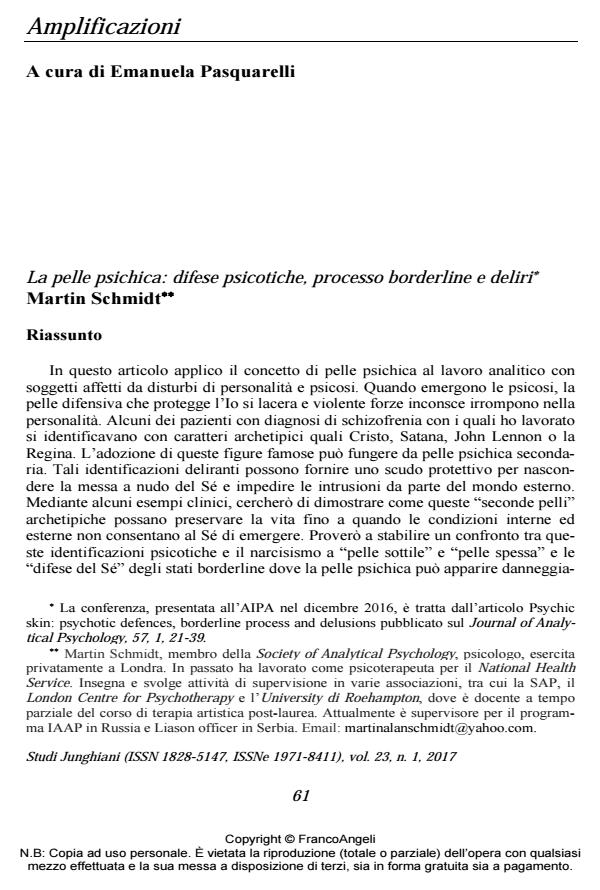Psychic skin: psychotic defences, borderline process and delusions
Journal title STUDI JUNGHIANI
Author/s Martin Schmidt, Emanuela Pasquarelli
Publishing Year 2017 Issue 2017/45
Language Italian Pages 20 P. 61-80 File size 216 KB
DOI 10.3280/JUN2017-045004
DOI is like a bar code for intellectual property: to have more infomation
click here
Below, you can see the article first page
If you want to buy this article in PDF format, you can do it, following the instructions to buy download credits

FrancoAngeli is member of Publishers International Linking Association, Inc (PILA), a not-for-profit association which run the CrossRef service enabling links to and from online scholarly content.
In this paper, I apply the concept of psychic skin to analytic work with people suffering from personality disorders and psychoses. When psychoses emerge, the defensive skin which protects the ego is breached and violent unconscious forces rip through the personality. Some of the patients diagnosed as schizophrenic with whom I work have identified with archetypal characters such as Christ, Satan, John Lennon and the Queen. I attempt to show how the adoption of these inflated personas can serve as secondary psychic skins. Such delusional identifications can provide a protective shield to hide the denuded self and prevent intrusion from the external world. Through clinical example, I try to demonstrate how these archetypal "second skins" can preserve life until internal and external conditions make it possible for the self to emerge. I contrast such psychotic identifications with "thin-skinned" and "thick-skinned" narcissism as well as "defences of the self" in borderline states where the psychic skin may be damaged but does not disintegrate. I also look at the ways in which Jung’s own personal experience was different from this and how he managed to avert psychotic breakdown.
Keywords: Archetypal identification, art therapy, inflated persona, liminality, schizophrenia, self harm, shame
Martin Schmidt, Emanuela Pasquarelli, La pelle psichica: difese psicotiche, processo borderline e deliri in "STUDI JUNGHIANI" 45/2017, pp 61-80, DOI: 10.3280/JUN2017-045004